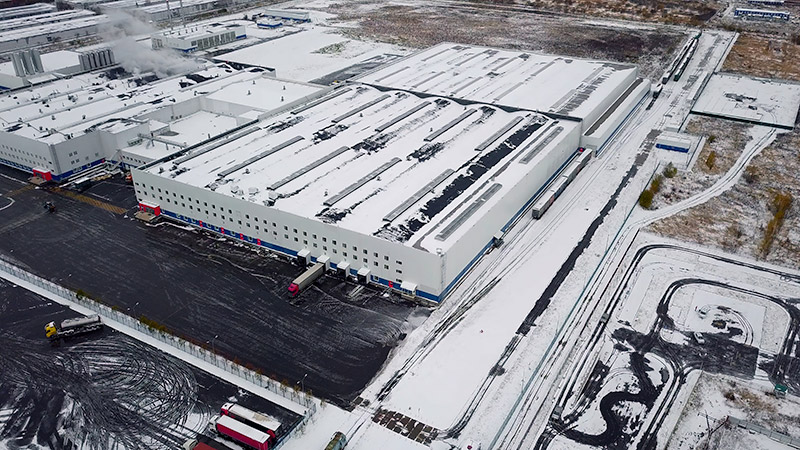Winter poses unique challenges for warehouse operations. Cold temperatures, ice, and shorter days can affect productivity, employee safety, and equipment performance. Without proper preparation, warehouses can experience costly delays, damaged inventory, and increased safety risks. Here’s how to keep your warehouse running efficiently during the winter months.
1. Maintain Optimal Temperature
Cold weather can cause discomfort for employees and affect the performance of temperature-sensitive equipment. Ensuring that your warehouse remains at an optimal temperature is crucial.
- Insulate the warehouse: Proper insulation reduces heat loss, helping maintain a stable indoor temperature.
- Use industrial heaters: Invest in high-capacity heaters that can warm large warehouse spaces efficiently.
- Zone heating: Focus heating efforts on high-traffic areas, such as workstations and loading docks.
- Service HVAC systems: Schedule maintenance before winter to ensure that heating systems operate reliably throughout the season.
2. Prevent Slips and Falls
Icy surfaces and moisture brought in from outside can increase the risk of workplace accidents. Preventing slips and falls is critical for employee safety.
- Lay down non-slip mats: Place mats at entrances and other high-traffic areas to reduce the risk of slipping.
- Clear ice and snow regularly: Ensure walkways, loading docks, and parking lots are free from snow and ice.
- Provide anti-slip footwear: Supply employees with winter-specific safety shoes designed for better grip on slippery surfaces.
- Display wet floor signs: Ensure clear signage is in place wherever moisture accumulates.
3. Ensure Equipment Reliability
Cold temperatures can negatively impact the performance of warehouse equipment, particularly battery-operated machinery and vehicles.
- Maintain batteries: Cold weather drains batteries faster. Keep forklift and equipment batteries fully charged and inspect them regularly.
- Use cold-weather lubricants: Regular lubricants can thicken in low temperatures. Switch to products rated for winter use to ensure smooth operation.
- Inspect tires: Check forklift tires for proper tread depth and, if necessary, switch to tires designed for winter conditions.
- Inspect dock seals: Make sure dock doors and seals are in good condition to prevent drafts and moisture from entering the warehouse.
4. Protect Inventory
Cold weather can damage certain types of inventory, especially those sensitive to temperature changes or moisture.
- Control humidity levels: Dry winter air can affect some products. Use humidifiers to maintain optimal humidity in the warehouse.
- Cover inventory: Use plastic sheeting or tarps to protect goods from condensation.
- Adjust storage methods: For temperature-sensitive items, consider using heated containers or insulated storage units.
5. Ensure Employee Safety and Comfort
Employees are at the heart of warehouse operations, so their safety and comfort should be a top priority during winter.
- Provide winter gear: Supply employees with warm clothing, including insulated gloves, jackets, and hats.
- Schedule regular breaks: Encourage employees to take frequent breaks in heated areas to stay warm and prevent cold-related illnesses.
- Offer hot drinks: Ensure hot beverages are available to keep employees warm and hydrated.
- Improve lighting: Since winter days are shorter, enhance indoor and outdoor lighting to improve visibility and safety.
6. Optimize Delivery and Loading Operations
Loading and unloading in cold weather requires special attention to avoid delays and accidents.
- Coordinate delivery schedules: Aim to schedule deliveries during daylight hours whenever possible.
- Use dock shelters: Dock shelters help keep snow and rain from entering the warehouse during loading and unloading.
- Keep loading equipment clean: Regularly remove snow and ice from forklifts, dollies, and other loading equipment.
7. Enhance Emergency Preparedness
Winter storms and extreme weather events can disrupt warehouse operations. Being prepared for emergencies can minimize downtime.
- Stock winter supplies: Keep essential supplies on hand, such as salt, shovels, blankets, and flashlights.
- Conduct safety drills: Prepare employees for winter-specific emergencies, including power outages and severe weather.
- Update emergency contacts: Ensure that all emergency contacts and service providers are up-to-date.
8. Monitor Energy Usage
Winter often brings higher energy bills, but you can take steps to reduce unnecessary energy consumption.
- Switch to energy-efficient lighting: Replace traditional bulbs with LED lights to cut down on energy costs.
- Automate heating and lighting: Use smart thermostats and automated lighting systems to reduce energy waste.
- Seal air leaks: Inspect the warehouse for drafts around doors and windows, sealing any gaps to prevent heat loss.
Final Thoughts
Winter doesn’t have to slow down your warehouse operations. By taking proactive steps to maintain equipment, protect employees, and manage energy use, you can keep your warehouse running smoothly and safely throughout the season. These measures not only improve productivity but also create a safer working environment for everyone.
Do you have additional tips for managing warehouse operations during winter? Share them in the comments below!

